TYPE-MOON History
TYPE-MOON is a Japanese game company founded by Takeuchi Takashi and Nasu Kinoko. While the company's official name is "Notes" (ノーツ), it is known to most as "TYPE-MOON" (タイプムーン), the brand name the company uses when publishing visual novels.

Introduction

TYPE-MOON was originally a doujin group headed by Takeuchi Takashi and Nasu Kinoko. The group's first well-known work was the novel Kara no Kyoukai, written by Nasu and illustrated by Takeuchi. Between October 1998 and May 1999, Nasu and Takeuchi serialized Kara no Kyoukai, on their personal website, Bamboo Broom. Kara no Kyoukai was not Nasu's only novel; some of his other works include DDD, Notes, and the unreleased works Mahoutsukai no Yoru and Koori no Hana.
The group rose to fame with the release of its adult visual novel Tsukihime during the 2000 winter Comic Market (Comiket). Tsukihime captivated audiences with TYPE-MOON's unique world setting and touching story. Tsukihime was not only adapted into an anime (Shingetsutan Tsukihime), but expanded upon in the fan discs Tsukihime PLUS-DISC and Kagetsu Tohya.
In 2002, TYPE-MOON teamed up with another doujin group, French-Bread, to create the 2D fighting game Melty Blood, featuring characters from Tsukihime. An improved version of the game was released under the title Melty Blood Re-ACT in May 2004. The game proved so popular an arcade version was released under the name Melty Blood Act Cadenza, which itself was ported to the PS2 in August 2006. A new installment in the series, Melty Blood: Actress Again, was released in late 2008.
Takeuchi and Nasu established Notes Co., Ltd. in 2003. In April of that year, after releasing Tsuki-Bako, a compilation of every game (excluding Melty Blood) the group had produced to that point, as their final doujin product, the team officially disbanded the doujin group known as TYPE-MOON, and established TYPE-MOON as a brand name under Notes Co., Ltd.
On January 30th, 2004, Notes (from here on referred to as TYPE-MOON) published their first commercial product, the adult visual novel Fate/stay night. Fate/stay night was adapted into an anime in January 2006. Near the end of 2005, Fate/stay night's fan disc, Fate/hollow ataraxia was released.
In late 2007, Capcom revealed a Fate fighting game called Fate/unlimited codes. The game was released in 2008, first as an arcades title and later on the PlayStation 2. In mid-2008, TYPE-MOON announced three new titles in the making: Mahoutsukai no Yoru, Girls' Work, and a remake of Tsukihime. The games were set to be released sometime in 2009, but was delayed until 2010.
Before They were Known
Nasu Kinoko and Takeshi Takeuchi are old friends. They have known each other since junior high school. And it was in junior high that Nasu first began working on the story of Fate/stay night.
The motivation behind Fate was simple: Nasu was a big fan of the Samurai Resurrection (Makai Tensho) manga, which involved battles between dead historical figures from around Japan. Inspired by Samurai Resurrection, Nasu wanted to write a story about historic heroes from around the world participating in a grand battle. The basic concept of Fate, such as the battle for the Holy Grail, magicians, and servants, had been set.
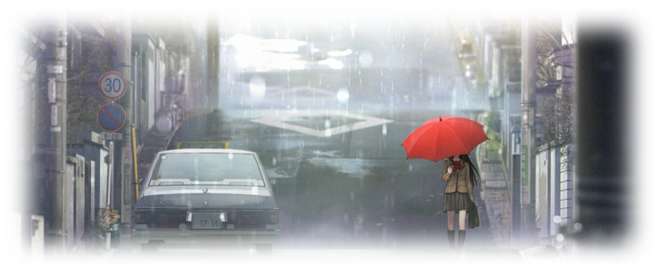
At the time, Fate was not intended to be a game, much less an adult one. Nasu was simply a junior high student whose goal, like many, was to have his novel sold in bookstores around the country. Likewise, his friend Takeuchi was simply an aspiring artist who wanted to jump into the manga business.
Initially, Nasu only wrote what would become the game's "Fate" storyline (the game Fate/stay night had three storylines, the Fate storyline being one of them). In his early drafts, Fate's heroine Saber was a man, and the protagonist was a girl with glasses. For a number of reasons, Nasu stopped writing at the fight with Sasaki Kojiro (about 1/3 of the current Fate storyline), and set the work was aside for many years.
The Formation of TYPE-MOON
During his own junior high years, Takeuchi attended Comiket to sell a doujinshi novel, but after unsatisfactory sales, he lost interest in a doujin career.
After graduating college, Takeuchi went to Hiroshima to work for a game company called Compile. Although Compile was not as big as Namco or Square (now Square Enix), it wasn't exactly a small company either. But in 1998, with more than 400 employees and tons of investment in nothing, Compile filed for bankruptcy (some of Compile's ex-staffers went on to found game companies like Aiky, Sting, and MileStone, among others). Takeuchi returned to Tokyo.
After finding a new job in Tokyo, Takeuchi learned that one of his new co-workers was part of a very active group at Comitia, a doujinshi convention founded in 1984 and currently held four times a year. Unlike other doujin conventions like Comiket, the works sold at Comitia are limited to original works that don't parody existing works. Many professional mangaka participate in the event, and groups that attend Comitia are all considered to have considerable influence and to be of high quality. Takeuchi's coworker happily invited him to doujin conventions and gatherings, teaching him the way of doujin.
At the time, Nasu enjoyed writing background stories for desktop role-playing games, but he wasn't confident submitting his drafts to publishers. Not surprising after his works were repeatedly rejected from the New Hope awards because of their excessive length.
Nasu and Takeuchi, still friends, toyed with the idea of making a game to showcase Nasu's writing. Eventually, they decided to start a doujin group, though they didn't initially plan to make adult games. Bolstered by the nomination of some of Takeuchi's works for the New Hope awards, the two decided to keep things simple and create doujin comics. In the doujin world, their less-than-lofty goal didn't promise huge success.
Although Nasu's novel Kara no Kyoukai had already been serialized on his personal diary, Bamboo Broom, the work was not well-known. So after careful consideration, taking into account sales, content, and Takeuchi's hobby, the two decided, instead, that their first game would be an H-game.
By a lucky coincidence, two of Takeuchi's friends from Compile, one specializing in programming and the other in music, moved to Tokyo. After recruiting the two friends, the four men officially formed their doujin group. Nasu was in charge of scripts and Takeuchi was in charge of CG (computer graphics). With everyone gathered, the team began its journey of game-making, and 18+ game-making at that.
Since Nasu was in charge of creating the "Moon World" setting, as well as creating new plots, the members decided to make him the center of the group. And though he had final say over the story, he listened to suggestions from the group, taking any he thought would benefit TYPE-MOON. Although Takeuchi was ostensibly in charge of artwork only, Nasu admits the personalities of some of his characters were influenced by Takeuchi's character designs, like Fate/hollow ataraxia's heroine Bazett Fraga McRemitz. It wasn't just Nasu's control over the "world" of the games that put him in the center of the group. His natural knack for getting along with others essentially guaranteed him a central position in the group from the start. Takeuchi once joked that TYPE-MOON hired new recruits not based on their ability, but whether they'd end up fighting each other.
The Road to Fame
The making of TYPE-MOON's first game, Tsukihime, was full of bitterness. The drawing and coloring were all done by Takeuchi. It was said that during his lunch/afternoon break at his day job, Takeuchi would bike home and work on the art, go back to work, and repeat the process until three in the morning.

Nasu wasn't much better off. Eventually, he quit his job, and Takeuchi told him: "I'll take care of the living expenses, you work on Tsukihime." So Nasu began his life of writing scripts all day. In the end, Nasu had produced around 5,000 pages of script in 4 months. There were even rumors that the two considered selling organs to raise funds (Though clearly an exaggeration, it does demonstrate how much work was put into the game).
Looking back, Takeuchi's art for the game was tragically bad. Even though Takeuchi was even then a talented artist, he was more proficient at drawing manga, not high quality CGs. The concept art was great, but the color, outline, and many other areas needed much more polish. But since Tsukihime was only a doujin game, the quality was considered acceptable.
After two trial editions were released in 1999 and the "Half Moon" edition was released at the 2000 Summer Comiket, the completed version of Tsukihime was finally released during the 2000 Winter Comiket. Through word of mouth, Tsukihime soon became immensely popular thanks to its rich and engaging storyline, Nasu's unique style of storytelling, and the growing doujin market. The game was later adapted into an anime, a manga, and spawned numerous merchandising and memorabilia franchises.
In January 2001, a few short stories, a trial version of Tsukihime, some wallpapers, and chapters of Kara no Kyoukai were released together as Tsukihime PLUS-DISC. And during the 2001 Summer Comiket (C60), TYPE-MOON released the Tsukihime fan disc Kagetsu Tohya.
With the release of the fan disc Kagetsu Tohya, fans noticed that not only were the CGs' lines more refined, but the coloring was also kicked up a notch. It turned out that not only had Takeuchi been practicing hard, TYPE-MOON had also hired two new staff members, Aotsuki Takao and Koyama Hirokazu. From then on, Takeuchi only took care of the initial sketch/concept art, while others did the coloring.
Around the same time, Takeuchi's art style began to take on its distinct form, similar to styles found in seinen manga. Some say this change was brought about by him trying to match his style with the world Nasu created. Some people complained about his characters' arms and legs being too long, but others simply credited it to Takeuchi's unique style. Takeuchi once mentioned his admiration for the works of Yasuhiro Nightow (creator of Trigun manga), and says his inspiration came from him.
In 2002, Nasu's Kara no Kyoukai was compiled into a novel and released by Kodansha. This was the same year TYPE-MOON collaborated with French-Bread to create Melty Blood, the fighting game set in the Tsukihime world.
After the success of Tsukihime, some friends from the commercial eroge industry suggested to TYPE-MOON the possibility of going commercial. TYPE-MOON was initially reluctant. The group had found its success in the doujin market, and the members were attached to the scene. If the group was successful as a doujin group, they though, why couldn't they just continue as one? Going commercial just because "the requirements were complete" seemed a bit greedy. In addition, Takeuchi had seen the legal restrictions they would face as a commercial company during his time at TV Game and knew they could be very frustrating. TYPE-MOON decided to continue as a doujin group.
The Road to Commercialization
Sometime later, Nasu and Takeuchi decided to turn the old Fate story into a Gal Game. In the beginning, Nasu was worried that because the main character was a girl, the story might not work as a Gal Game. Takeuchi switching the genders of the protagonist and the hero, Saber. Takeuchi describes Nasu's response to the suggestion as being: "as if I suggested Berserk's main character, Guts, should be a woman."
According to Nasu himself, "Even though sometimes he [Takeuchi] says impossible things, at the time the concept seemed simply ridiculous. Turning Saber into a girl, that'd completely destroy Fate! At first I was very against the idea, but after a while, I thought some of the difficulties that might arise could be resolved." And so work on Fate/stay night began.
Fate was not initially written as a game script, so the story had to be edited to add more game routes and plot, new setting changes, and so forth. Around a year after development began, the group began to realize that the capacity and scope of a doujin group severely limited what they could do with Fate. One of the most important factors was money. They had received help from other professionals during the making of Tsukihime, but that support was solely based on the pride of a game maker, and the group didn't want to always rely on others.
Faced with a difficult choice, TYPE-MOON decided to enter the commercial market in order to produce Fate commercially. Luckily, while TYPE-MOON's works are 18+ games, they aren't on the extreme end, so TYPE-MOON fared fairly well as a commercial company. Of course, the new company had to watch out for details, like not setting their games in high schools. Under Japanese law, 18+ games can't involve characters under the age of 18, so characters in the games are always students of "so-and-so University," not "so-and-so High School."
TYPE-MOON also considered the possibility of leaving the 18+ genre and heading straight to the console market, but the company saw the console market as too limiting, and continued making adult games.
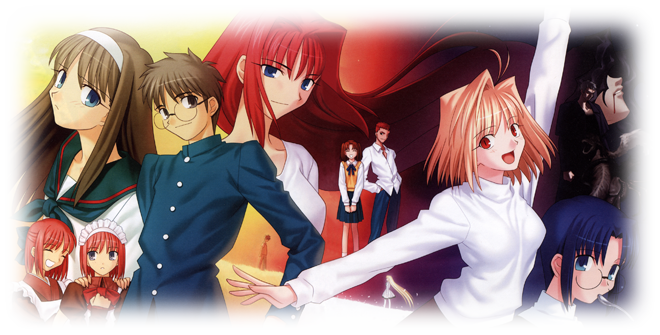
In 2003, lead by Nasu, Notes Co., Ltd. (the name taken from one of Nasu's early works, Notes) was launched. Soon afterwards, TYPE-MOON announced the news that Tsukihime was being adapted into an anime. In April, TYPE-MOON released their final product as a doujin group, Tsuki-Bako, and officially dissolved the group known as TYPE-MOON. Around the same time, Kodansha signed a publishing contract with TYPE-MOON, and in 2004 re-released Kara no Kyoukai with a new cover.
Even though TYPE-MOON was now officially Notes Co., Ltd., most of its members stayed the same, so fans still call them TYPE-MOON. These days, only a few people still know the name Notes Co., Ltd.
Simply put, TYPE-MOON went commercial for Fate.
In October 2003, Tsukihime was adapted into an anime under the title Shingetsutan Tsukihime. The adaptation served as a testament to TYPE-MOON's skill, and to the quality of their work Tsukihime, made when they were only a doujin group. Despite its prodigious publicity campaign, the Tsukihime anime's poor quality has now become one of the few black spots on TYPE-MOON's record. It wasn't until the anime adaptation of Fate was announced that Nasu and Takeuchi revealed their displeasure with the Tsukihime anime. Some fans even referred to the anime adaptation as "Fake Tsukihime" or even "doujin anime."
Fate/stay night was released on January 30th, 2004. The release date was set to coincide with dates mentioned in the game. Delays originally pushed back the release nearly six months, but TYPE-MOON wanted a winter release since the game's story takes place during the winter. Faced with the decision of publishing the game in summer instead, TYPE-MOON pushed the release back for another half year until winter 2004.
So what kind of game is Fate? It's neither intended to be a vehicle for sex scenes, nor a medium-defining project, but simply a "fantasy fighting visual novel." The adult scenes were added to advance the plot. In addition, instead of using the NScript engine as they did in Tsukihime, TYPE-MOON based Fate on the performance-oriented KiriKiri 2 engine. Through its seamless integration of text, images, sound effects, and BGM, Fate became a bestseller.
It is said that after Fate was released, Takeuchi's older brother said to Nasu, "Thank you so much, I've been waiting for an ending for fifteen years. Right now I'm probably the luckiest Fate fan in the world." It turned out that Takeuchi's brother was also a member of Nasu/Takeuchi's little group during junior high and fell in love with Fate after reading Nasu's original script. His feelings upon the game's release were probably something people who only experienced the finished product can only dream of.
Fate's total sales that year were 146,686 units, making it the bestselling Gal Game of the year. With monstrous momentum, the game went on to sell 28,557 copies in 2005.
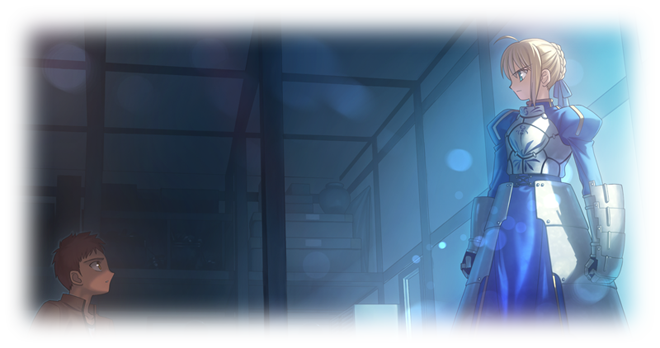
It's worth noting that Gal Games are usually played by a niche group, and their success cannot be measured in comparison to big budget console games that can sell millions of copies. In the Gal Game world, several thousand copies usually means breaking even, more than 10,000 is very successful, and more than 100,000 makes you a monster hit.
To thank its fans, and to make some quick profit, TYPE-MOON released the fan disc Fate/hollow ataraxia on October 28, 2005.
Due to its predecessor's success and influence, Ataraxia's popularity was even more off the charts. Even though it was released toward the end of the year, sales in 2005 reached 154,015 units sold. At the time, orders from Amazon.com exceeded 200,000, something that was only achieved by Falcom's original version of Xanadu in the history of PC games.
Though much of its success was no doubt due to Fate's popularity, TYPE-MOON did not slack off because Ataraxia was a fan disc. They produced it with the intent of surpassing Fate, which may be one of the reasons behind the company's success.
Expansion and the Calm Years
In the years following the release of Ataraxia, TYPE-MOON and its products enjoyed a steady rise in popularity, especially in the mainstream market. Many spin-offs, games, and books, and a great deal of merchandise appeared for TYPE-MOON's three main properties, Tsukihime, Fate, and Kara no Kyoukai.
Melty Blood, the 2D doujin fighting game by French-Bread and TYPE-MOON released at the December 2002 Comiket, became enormously popular, with tournaments being held all over Japan. In May 2004, an expansion pack called Re-ACT was released, adding new playable characters and an Arcade mode that featured additional storyline. A "final" update called Re-ACT Final Tuned was released in July 2005, marking the completion of the "first generation" Melty Blood.
Melty Blood was originally available only on the PC as a doujin game, but that changed in 2005. In March 2005, Ecole Software released an arcade version of Melty Blood, titled Melty Blood: Act Cadenza. Act Cadenza was later ported to the PS2 in mid-2006, and in July 2007, released on the PC as Melty Blood: Act Cadenza Ver.B, replacing Melty Blood: Re-ACT Final Tuned as the latest installment of the Melty Blood franchise. A new Melty Blood game, called Actress Again, was revealed in late 2007 and is set to be released in late 2008.
Tsukihime is not the only TYPE-MOON game to have its own fighting game spinoff. In November 2007, a feature in the Japanese gaming magazine Famitsu revealed that Capcom was developing a 3D fighting game based on Fate called Fate/unlimited codes. The game was officially unveiled at the 2008 AOU show in Japan by Capcom, in conjunction with Cavia and Eighting, and was released in Japanese arcades in mid-2008, with a PlayStation 2 port set to release in December 2008.
Fate was perhaps TYPE-MOON's most commercialized game. Aside from the above-mentioned fighting game and the countless merchandise, supplement books, and manga adaptations, the game was adapted into an anime in 2006. Much to the relief of fans, the anime was not a complete failure like the Tsukihime anime, although the story and animation left much to be desired. Fate was also ported to the PS2 in 2007 under the title Fate/stay night [Réalta Nua]. As with other eroge-to-console ports, the PS2 version of Fate did away with the adult CG scenes, but came with new non-adult CG. Also released in 2007 was a Capcom-produced 3D fighting game for the PSP called Fate/tiger colosseum, which featured the Fate characters in a super deformed style. A sequel to Fate/tiger colosseum titled Fate/tiger colosseum UPPER was released on August 28th, 2008.
TYPE-MOON also collaborated with other companies and groups on various projects. Fate/Zero, a four-volume prequel novel to Fate/stay night, was released in 2006 and 2007 during Comiket. The novel was illustrated by Takeuchi Takashi and written by Nitro+'s Urobuchi Gen. As with most TYPE-MOON properties at the time, subsequent soundtracks, Drama CDs, and supplement books were also released. In 2008, a bonus scenario anime created by Nasu and Takeuchi came with Chunsoft's visual novel 428 ~Fuusa Sareta Shibuya dee~ (the game went on to receive a perfect score on Famitsu). The bonus scenario spawned a TV anime adaptation titled CANAAN, which was also announced in late 2008.
The biggest surprise from TYPE-MOON in those years, though, was the film adaptation of Kara no Kyoukai. It all started in the last few days of 2006, when rumors in Japan spread that TYPE-MOON's novel Kara no Kyoukai was going to be adapted into an animated TV series after Ryogi Shiki, the main character of Kara no Kyoukai, appeared in the 2007 Illustration Calendar of the anime magazine Newtype. It was also announced that a Kara no Kyoukai pin-up poster would appear in the next month's issue of Newtype. The rumors intensified after the anime blog MOON PHASE reported leaked information about an article titled "Kara no Kyoukai and the TYPE-MOON Universe" and a pin-up poster planned for the February issue of Animage.
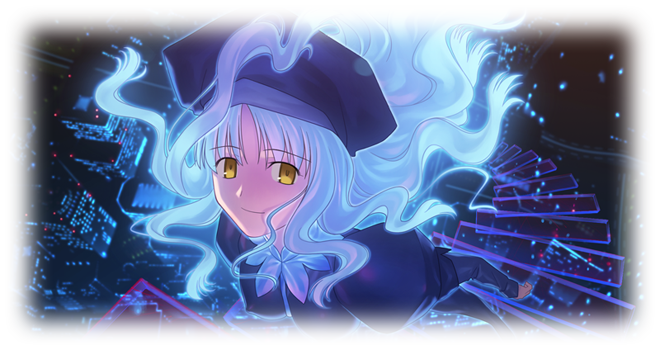
Finally, on December 28th, the official Kara no Kyoukai website opened at www.karanokyoukai.com with the announcement that the new adaption was to be a feature film, not a TV series, titled Kara no Kyoukai ~Garden of Sinners~. The biggest surprise, though, was that instead of a single film, Kara no Kyoukai ~Garden of Sinners~ was only the first of 7-part movie series, with each film covering one of the seven chapters of the original novel. Before the announcement, few expected to see Kara no Kyoukai animated, especially Nasu himself, who said during an interview that he originally opposed the idea of animating Kara no Kyoukai, fearing it might destroy the image of the original novel. Fans, remembering the horrors of the Tsukihime anime, were worried Kara no Kyoukai would suffer the same fate. And though no one saw the Fate anime as a failure, it was by no means a spectacular achievement either.
The films, handled by ufotable, premiered in selected theaters across Japan and were later released on DVD. Overall, the adaptation was considered a great success and gave the Kara no Kyoukai series a big boost in popularity. In subsequent years, Kara no Kyouaki appeared in various magazines and all kinds of merchandise were created for the series. Between 2007 and 2008, Kodansha re-released the original novels as a three volume bunkoban (high-quality re-release with a new cover). Around the same time, another of TYPE-MOON's novels, DDD, was gaining popularity. Written by Nasu and originally published in the magazine Faust from 2004 to 2005, DDD was released by Kodansha under its Kodansha BOX imprint. The release of the novel was highly anticipated by TYPE-MOON fans. Even Kodansha BOX's Editor-in-Chief praised the novel by saying: "This person (Nasu), is a genius!"
Sometimes popularity has its drawbacks. During the 2006 Winter Comiket (C71), the line for TYPE-MOON's booth was so long that it filled half of the entire West 4F hall, setting a record for the longest line for a commercial booth in Comiket history. The line to TYPE-MOON was so long during each Comiket that TYPE-MOON was banned from attending the 2008 Summer Comiket for "causing disorder." As a result, Nasu and Takeuichi revived their old doujin circle Takebouki (Bamboo Broom) and attended as a doujin group, to release Kara no Kyoukai the Garden of sinners/recalled out summer, the "lost chapter" of Kara no Kyoukai.
With so many spin-off products being released, many fans grew dissatisfied with TYPE-MOON's milking of its current line of games. Since the release of Ataraxia, TYPE-MOON had not released any "new" properties. The Character Material released in 2006 came with three "Prelude stories" from Tsukihime 2, but no other information on Tsukihime 2 was released. According to tidbits revealed during interviews and such, TYPE-MOON's next game was said to be set in a realistic setting, supposedly to show TYPE-MOON can also create non-fantasy based games. When official announcements came, no one was prepared for what TYPE-MOON revealed.
The Next Worlds of TYPE-MOON
In April 2008, rumors began circulating that new works from TYPE-MOON would be announced in Tech Gian and TYPE-MOON Ace. Eventually scans of the magazine revealed that TYPE-MOON was making not one, not two, but three new games: Mahoutsukai no Yoru, Girls' Work, and a remake of Tsukihime.
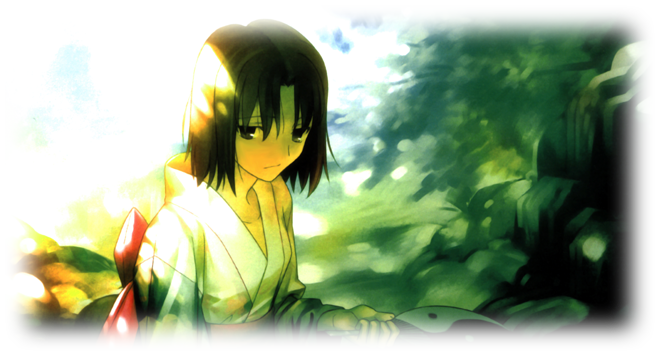
No one expected the simultaneous announcement. But even more surprising was the news that this would be the first time Nasu and Takeuichi were not directly involved with the story/art of a TYPE-MOON "main game." While Koyama Hirokazu would be in charge of Mahoutsukai no Yoru's art, Girls' Work would be written by Liar-soft's Hoshizora Meteo and Myogaya Jinroku and drawn by someone else. Additionally, the audience of Mahoutsukai no Yoru and Girls' Work were listed as "All Ages;" they would be the first main TYPE-MOON games to contain no adult content. The games were set to release sometime in 2009, and fans eagerly waited for more information to become available.
However, 2009 was not the big year TYPE-MOON fans had expected. Although new information on Mahoutsukai no Yoru and several other TYPE-MOON products was revealed in Kadokawa Shoten's TYPE-MOON Ace volume 2 and 3, TYPE-MOON itself did not release any major products. In August of 2009, an announcement was made that Mahoutsukai no Yoru had been delayed until 2010. The release dates of Girls' Work and the Tsukihime remake were still unknown, and the release date of the third of the DDD novels was nowhere in sight.
While TYPE-MOON did not produce any new original products, the company was involved in many side projects that saw its properties expanding into other media. In 2009, the seventh and final episode of the Kara no Kyoukai animated film was completed, and a new Fate/stay night Unlimited Blade Works movie was also announced. Fate/stay night was adapted into fighting and RPG games for multiple platforms. TYPE-MOON was also involved in the making of the fall 2009 anime series CANAAN.
In the end, 2009 was a successful year for TYPE-MOON business-wise, as they began working with other companies on joint projects, and saw many of their products expanding into other markets. However, the company's success also began to worry its fans, most of who felt TYPE-MOON was becoming overly commercialized, milking its old properties instead of releasing new ones. With the new Fate movie and Mahoutsukai no Yoru planned for 2010, many fans looked forward to the new year.
2010 and 2011 saw more spin-off games, films, and anime adaptations, including the Fate/Zero anime, Fate/EXTRA, and a comedy OVA series titled Carnival Phantasm that was made to celebrate the TYPE-MOON's 10th anniversary. However, the release date Mahoutsukai no Yoru was pushed back time and time again.
Note that most information were gathered and organized from interviews and magazine articles, as well as news articles and blog posts from the time when specific events took place. There are likely some inaccuracies and mistakes in the article, if you notice any, please let us know!




